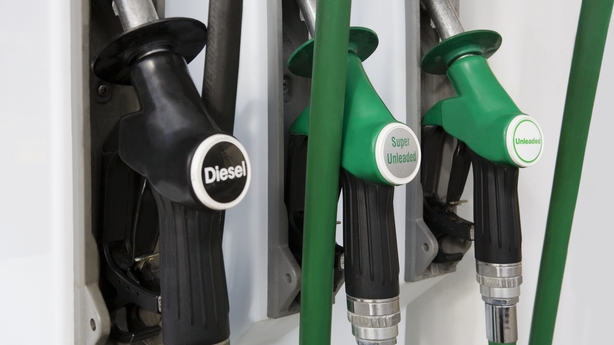New taxes on electricity could be used to contribute to alternative revenue streams that may be required to replace fossil fuel revenues in the future, the Tax Strategy Group has suggested.
But the TSG's report on Climate Action and Tax says that if electricity is to provide an alternative tax revenue stream, changes to the current rate and reliefs would be required.
The Tax Strategy Group is comprised of officials and advisors from across different government departments.
It’s chaired by the Department of Finance and examines possible options when it comes to taxes in the upcoming Budget.
The papers are published annually in advance of the Budget.
Electricity tax is currently applied to supplies of electricity at a rate of €1 per Megawatt hour (MWh) for business and non-business uses.
However, there are also a number of reliefs, including a blanket one for the domestic residential sector and for power produced from renewables.
"Given the low rate and expanse of relief available, electricity tax receipts are among the lowest yields of energy revenue," the report claims.
But the analysis estimates that if the current tax rate was increased to €2 per MWh it would yield an additional €4m per year.
While increasing the rates to €5 per MWh would provide an additional €16m per annum and pushing it up to €10 per MWh would generate €35m.
The paper also outlines how removing the household exemption at the current rate would lead to an estimated annual yield of €3m.
If the rates were increased to €2, €5 or €10 per MWh, the return would be €6m, €16m and €32m respectively.
However, if the relief were to be removed the impact on an average household bill per year would be €4.80 at current rates.
If rates were to increase to €2, €5 or €10 per MWh, the estimated impact would be €9.50, €23.80 or €47.70 per year on an average household bill.

The paper also points to the "excise gap" between the tax on diesel versus the tax on petrol.
"As the carbon tax operates on a polluter pays principle, the lower rate of non-carbon excise serves to undermine the environmental goal of the carbon tax," it states.
The report puts a figure of around €400m a year on the revenue foregone as a result of the gap.
It says there have been many calls for equalisation of diesel and petrol excise rates here on environmental and public health grounds.
It lays out options for phasing the gap out over periods ranging from 3-10 years through increasing the non-carbon component on diesel by around 4, 3, 2 or 1 cent annually.
"Assuming full pass through by retail to consumers and accounting for impact of VAT, the per litre increase at the pumps would be in the order of 5, 4, 3 or 1.5 cent respectively," it states.
The analysis also outlines the revenue foregone through the Diesel Rebate Scheme (DRS), which provides a distinction in tax between commercial and non-commercial use of diesel.
Last year the value of repayments under the scheme was €35.5m.
The report cites other research from the ESRI that found the scheme has encouraged greater consumption of diesel leading to negative environmental consequences.
While the CSO and the Environmental Protection Agency classify the DRS as a potentially environmentally damaging fossil fuel subsidy.
"However, as with addressing diesel excise gap, there would be a significant cost for the haulage and transport sectors, which would be reflected in higher costs for consumers if it were removed," the authors suggest.
The TSG report also reminds readers that under the Finance Act 2020, €7.50 per tonne of CO2 emitted will be added to the carbon tax in 2024.
This will be applied to diesel and petrol on October 10th of this year, and to all other fuels from May 1st next year to allow for the winter heating season.
The move will add €1.28 to the cost of a 60 litre fill of petrol, €1.48 to a similar fill of diesel, €19.40 to a 900 litre tank of kerosene and 20c to the cost of bale of peat.
A 40kg bag of coal will rise by 90c while 11,000 kWh or natural gas will increase by €16.98.







